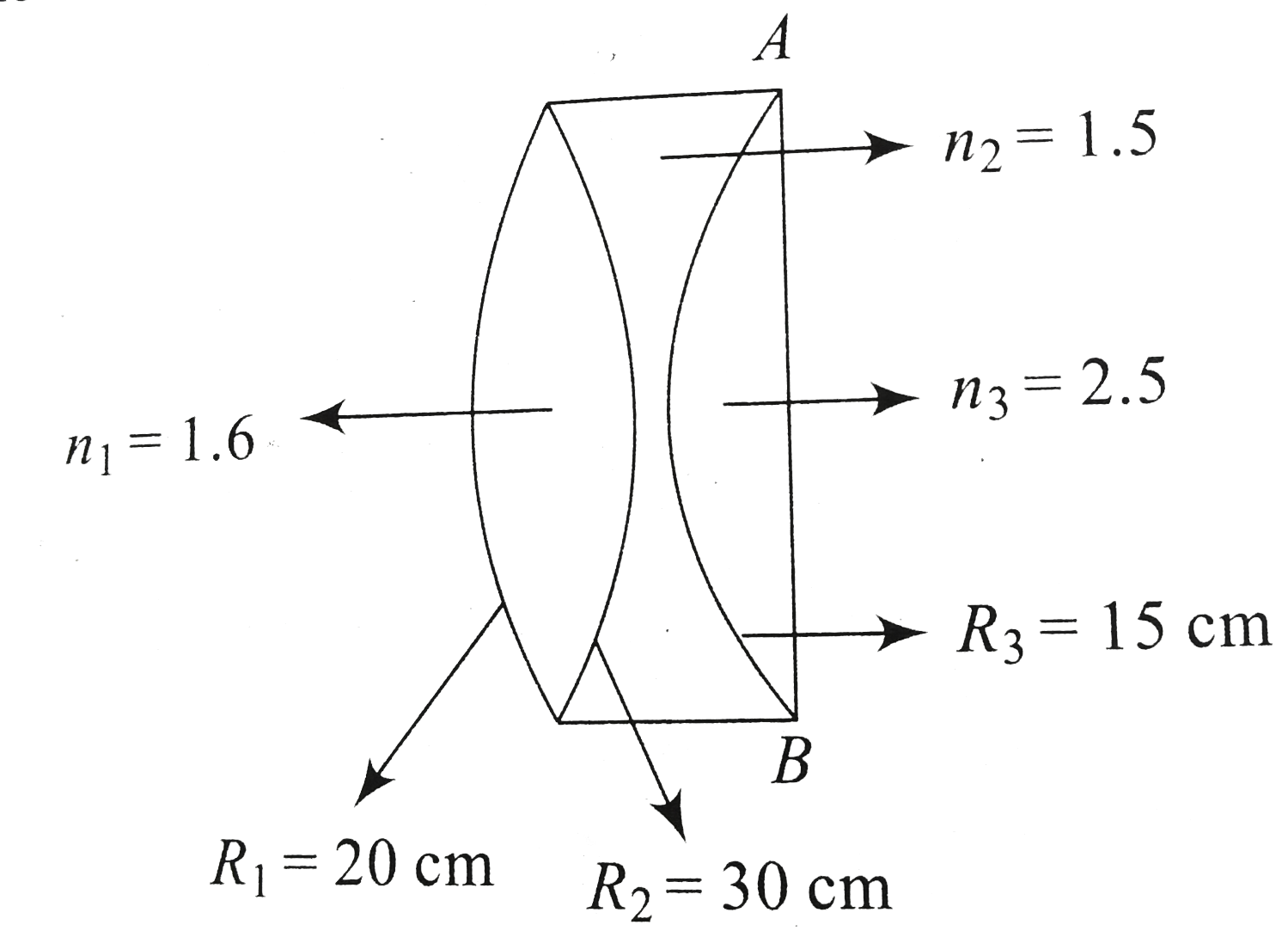A thin prism of angle 5∘is placed at a distance of10cm from object.What is the distance of the image from object?Given μof prism=1.5).
π8cm
π12cm
5π36cm
π7cm
The correct Answer is:C
To solve the problem, we need to determine the distance of the image from the object when a thin prism is placed in front of it. Here’s a step-by-step breakdown of the solution:
Step 1: Understand the Problem
We have a thin prism with an angle A=5∘ placed at a distance of d=10cm from the object. The refractive index μ of the prism is given as 1.5. We need to find the distance of the image from the object.
Step 2: Calculate the Angular Deviation
The angular deviation δ caused by the prism can be calculated using the formula:
δ=A×(μ−1)
Substituting the values:
δ=5∘×(1.5−1)=5∘×0.5=2.5∘
Step 3: Convert Angular Deviation to Radians
To use the angular deviation in calculations, we convert degrees to radians:
δ (in radians)=2.5×π180=2.5π180=π72radians
Step 4: Calculate the Shift in Position
The shift x of the image due to the prism can be approximated using the formula:
x=d×tan(δ)
For small angles, tan(δ)≈δ. Therefore:
x≈d×δ
Substituting the values:
x≈10cm×π72
Step 5: Calculate the Final Distance
Now, we can calculate the distance:
x≈10×3.1472≈10×0.0436≈0.436cm
Step 6: Conclusion
The distance of the image from the object is approximately 0.436cm.
Final Answer
The distance of the image from the object is approximately 0.436cm.
---
We have a thin prism with an angle A=5∘ placed at a distance of d=10cm from the object. The refractive index μ of the prism is given as 1.5. We need to find the distance of the image from the object.
The angular deviation δ caused by the prism can be calculated using the formula:
δ=A×(μ−1)
Substituting the values:
δ=5∘×(1.5−1)=5∘×0.5=2.5∘
To use the angular deviation in calculations, we convert degrees to radians:
δ (in radians)=2.5×π180=2.5π180=π72radians
The shift x of the image due to the prism can be approximated using the formula:
x=d×tan(δ)
For small angles, tan(δ)≈δ. Therefore:
x≈d×δ
Substituting the values:
x≈10cm×π72
Now, we can calculate the distance:
x≈10×3.1472≈10×0.0436≈0.436cm
The distance of the image from the object is approximately 0.436cm.
The distance of the image from the object is approximately 0.436cm.
Similar Questions
A lens is made of three thin different mediums. Radius of curvature and refractive index of each medium is shown iin Figure., Surface AB is straight. An object is placed at some distance from the lens by which a real image is formed on the screen placed at a distance of 10cm from the lens. Find the distance of the object from the lens.

View SolutionReal and inverted image of an object is formed at a distance d=40 cm from the object. The size of the image is hall of that of object.

View SolutionAn object is placed at a distance of f/2 from a convex lens. The image will be
View SolutionAn object is placed at a distance of 12 cm from a convex lens of focal length 8 cm. Find :
the position of the image
View SolutionAn object is placed at a distance of 12 cm from a convex lens of focal length 8 cm. Find :
nature of the image
View SolutionAn object is placed at a distance 24 cm in front of a convex lens of focal length 8 cm.
Calculate the distance of the image from the lens.
View SolutionPlane surface of a thin plano-convex lens is silvered. If a point object is placed on principal axis at a distance 60cm from the lens and fial image is formed at a distance 30cm from the lens on same side. What will be the distance of final imagge from the lens if the plane surface is not silvered.
View SolutionAn object is placed at a distance of 20 cm from a concave mirror of focal lenght 10 cm. What is the image distance?
View SolutionAn object is placed at 20 cm from a convex mirror of focal length 20 cm. The distance of the image from the pole of the mirror is
View SolutionDraw a labelled ray diagram for the formation of image by a convex lens of focal length 15 cm when the object is placed at a distance of 25 cm from the lens. Determine the size of the image formed, if size of the object is 4 cm.
View Solution
